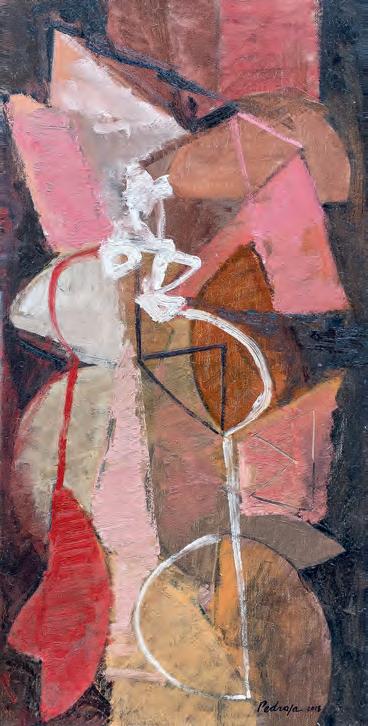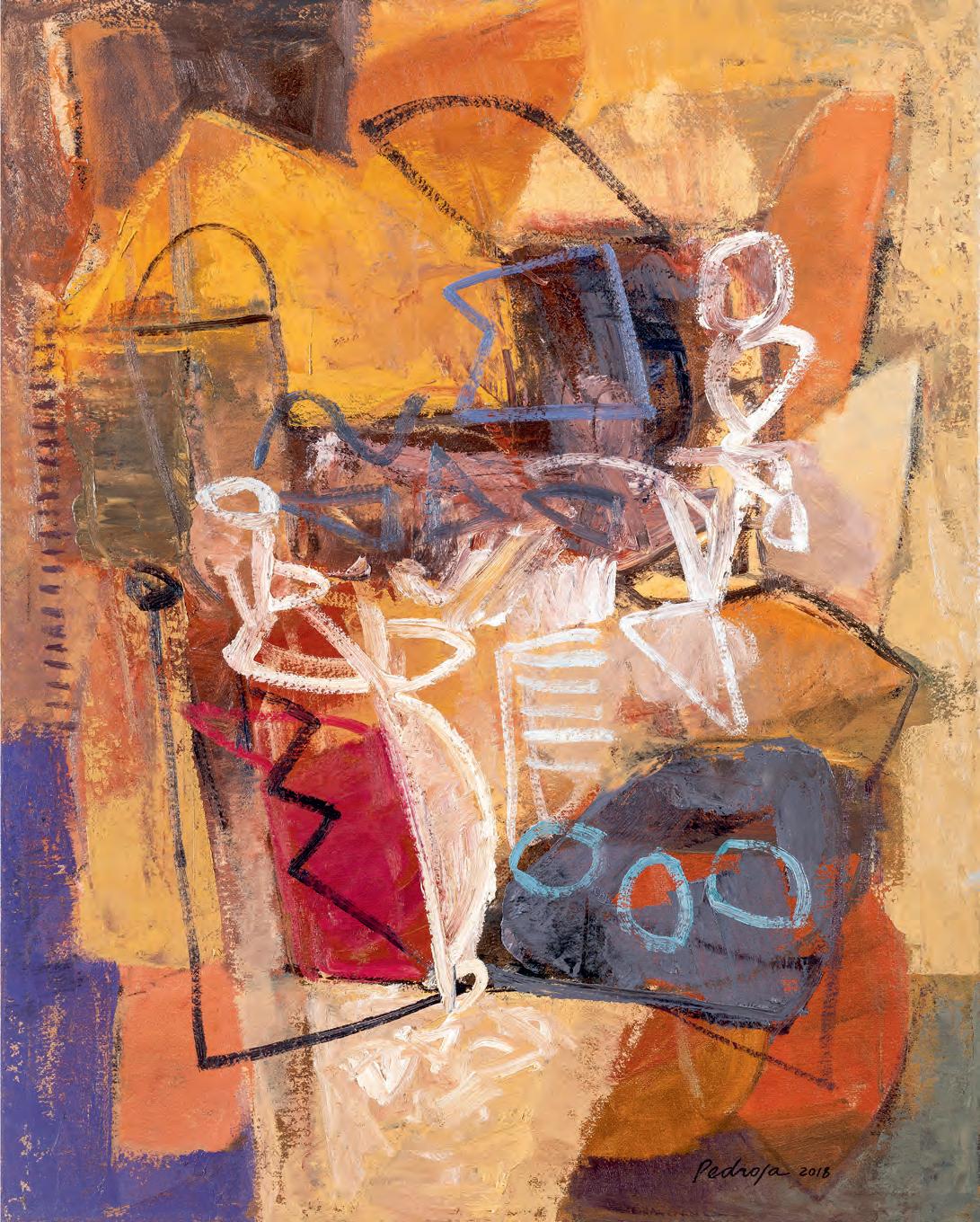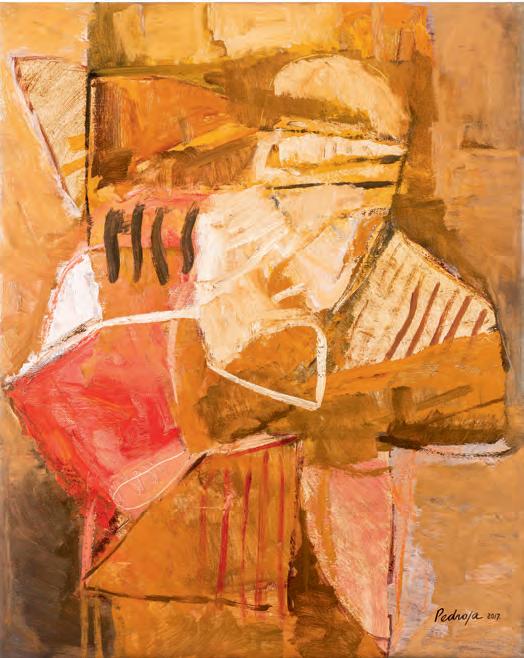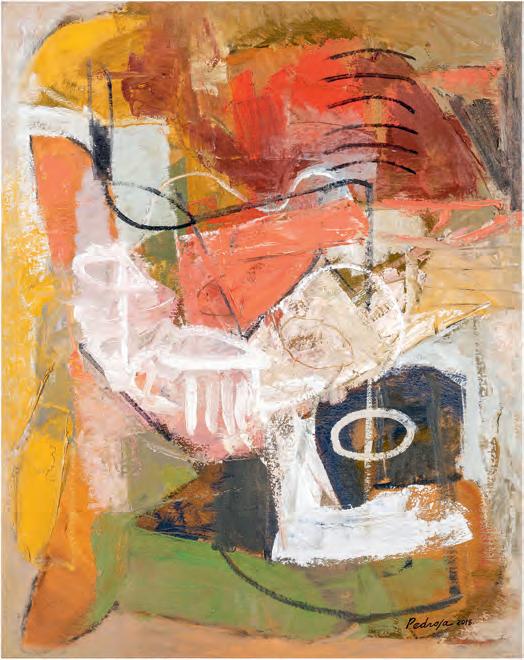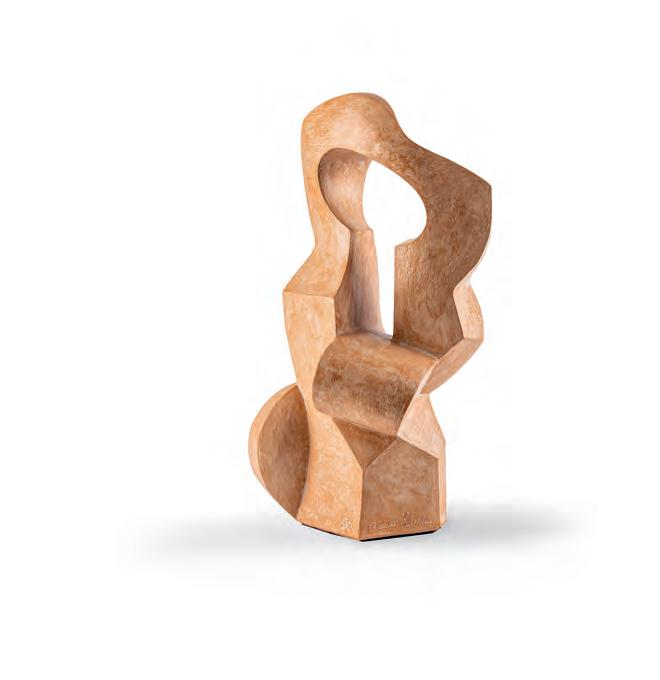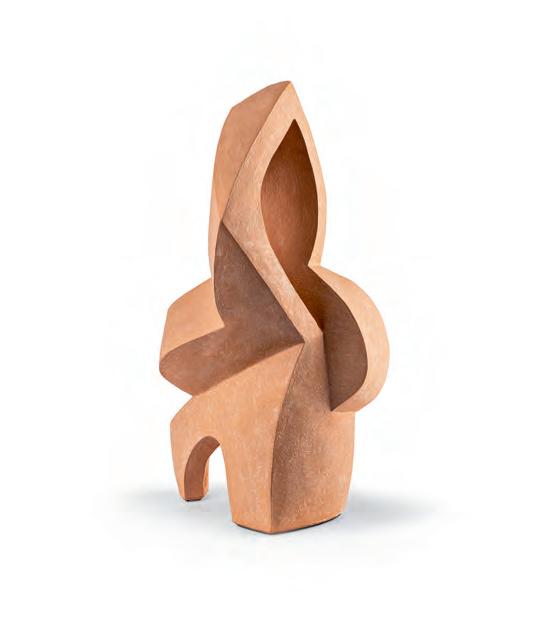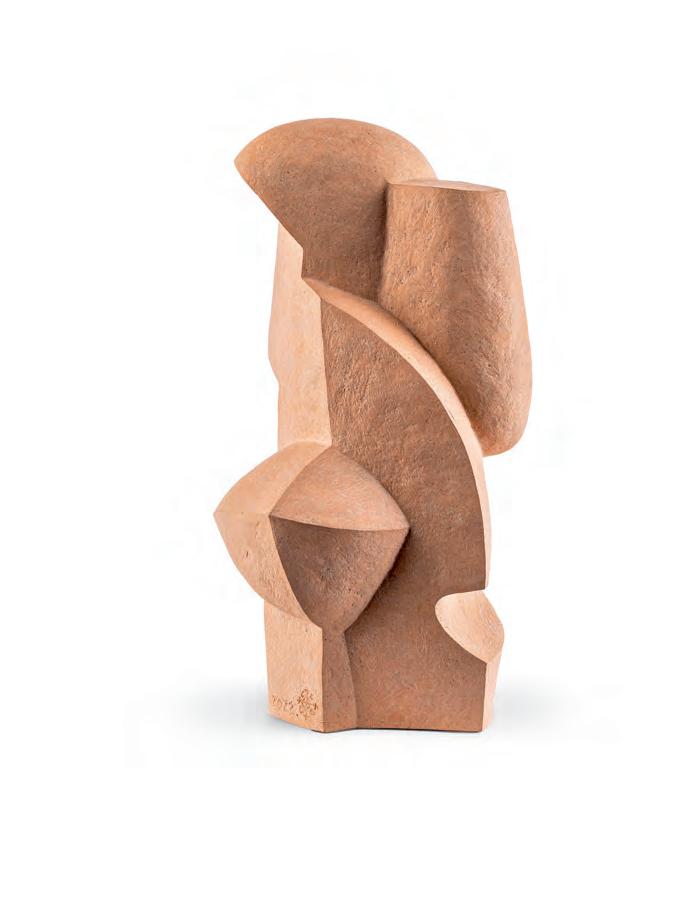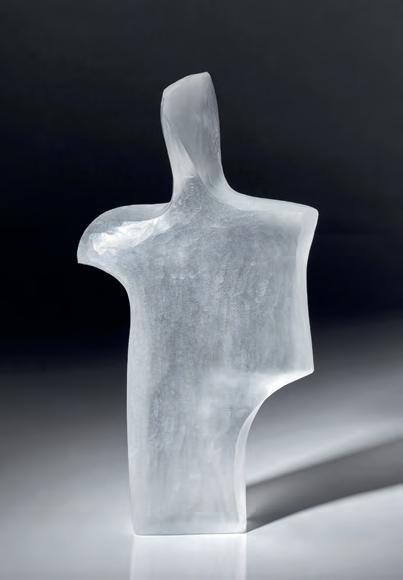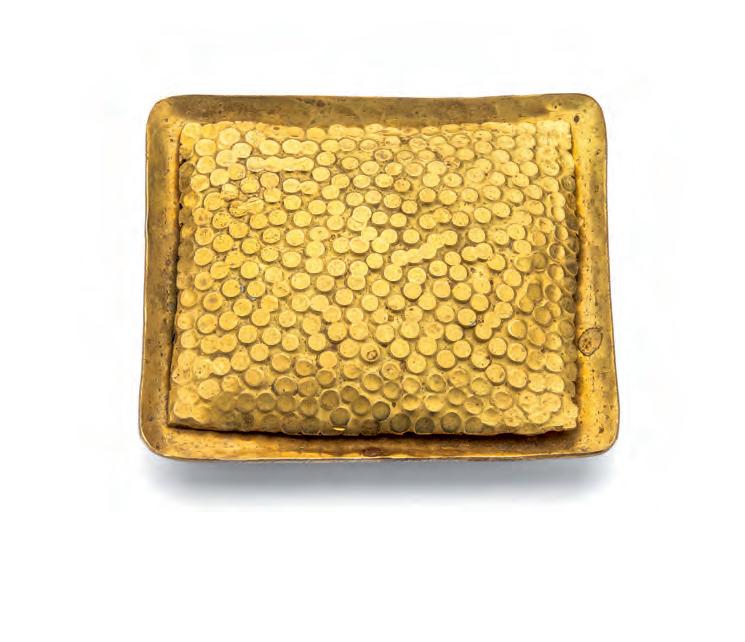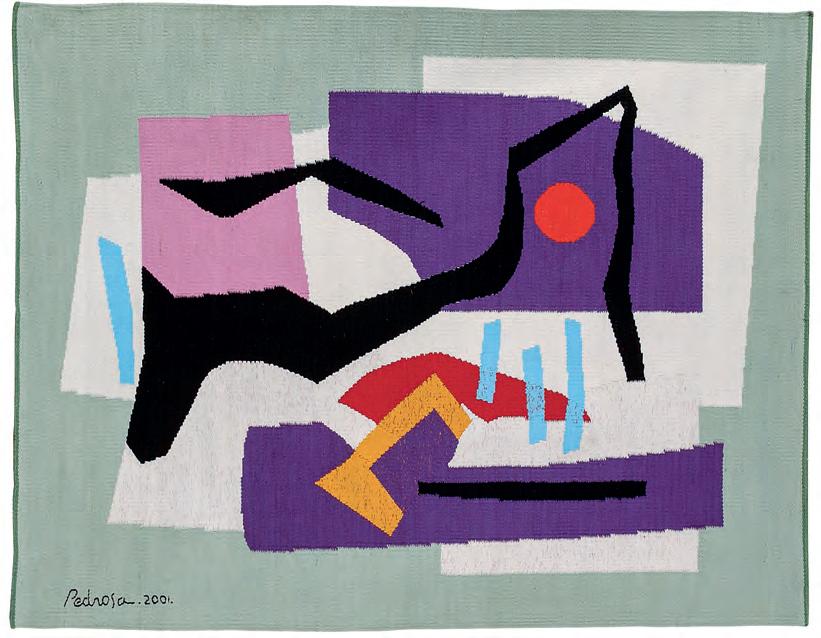Art Has a Life of Its Own
Thereza Pedrosa
Ancient and modern, traditional and eccentric, pensive and outgoing, simply and extraordinarily contradictory—this is how Bruno Pedrosa, the man and the artist, presents himself to the world. We cannot speak about the life of the man without talking about the work of the artist, nor, conversely, can his art be separated from his life. Born on January 11, 1950, on the plantation estate Fazenda Catingueira in the Brazilian hinterland (sertão), Raimundo Pinheiro Pedroza XIV (in art called Bruno Pedrosa) bears the name of his ancestors with pride and dignity, aware since he was a child that his family tradition goes back centuries and is bound to the land of northeastern Brazil. Brought up in the home of his paternal grandparents after the tragic loss of his mother when he was a year old, every day he listened to the stories of ancestors, narrated by older relatives as they swung, at the end of the workday, in their hammocks. This is the context in which family, friends, and ties revealed themselves to be, for the artist, the very essence of a man’s life. He made his first drawings at the age of five or six for his sister: stage sets for the stories she acted out with her dolls.
Antico e moderno, tradizionale e stravagante, riflessivo ed estroverso, semplicemente e straordinariamente contradditorio. Così si presenta al mondo l’uomo e l’artista Bruno Pedrosa. Non è possibile parlare della vita dell’uomo senza parlare dell’opera dell’artista, né viceversa si può scindere la sua arte dalla sua vita. Nato l’11 gennaio del 1950 nella piantagione Catingueira, nell’entroterra del sertão brasiliano, Raimundo Pinheiro Pedroza XIV (in arte Bruno Pedrosa) porta il nome dei suoi avi con orgoglio e fierezza, conscio fin da bambino che la sua famiglia ha una tradizione secolare che lo lega alle terre del nord-est del Brasile. Cresciuto nella casa dei nonni paterni dopo la tragica perdita della madre all’età di un anno, ascolta ogni giorno le storie che gli anziani raccontano nell’alpendre, dondolandosi nelle loro amache alla fine della giornata di lavoro. E’ in questo contesto che la famiglia, gli amici e i legami si rivelano per l’artista l’essenza stessa della vita di un uomo. I primi disegni li realizza a cinque-sei anni, per la sorellina: sono scenari teatrali dove lei può ambientare le storie che fa vivere alle sue bambole.
Dopo gli studi elementari in un collegio a Crato, a 200 km dalla fazenda, e il liceo classico a Fortaleza, all’età di diciotto anni, Bruno va dal padre, fazendeiro di ennesima generazione, e gli parla della decisione che cambierà il corso della sua vita: vuole andare a Rio de Janeiro, a 3500 km di distanza, per studiare nella migliore Accademia di Belle Arti del paese e diventare un artista. Pur senza comprendere la decisione del figlio, Manoel Pinheiro Pedroza lo appoggia incondizionatamente, dandogli così l’opportunità di laurearsi in Storia dell’Arte, Filosofia e Archeologia all’Università Federale di Rio de Janeiro. In questi anni, dal 1969 al 1975, l’artista approfitta delle vacanze estive per viaggiare ed esplorare il SudAmerica, conoscendo luoghi, persone, culture e storie differenti, che lo hanno arricchito nella mente e nello spirito. Visita la Bolivia, l’Ecuador, il Perù. Gli studi archeologici lo incuriosiscono e lo spingono con interesse ad approfondire la cultura e l’arte degli Inca. Tutto ciò influenza l’arte di Pedrosa, che in questi anni di studi e ricerche si divide tra disegni figurativi, che rappresentano l’anima
After elementary education at a boarding school in Crato, 200 kilometers from the Fazenda, and classical high school in Fortaleza, at the age of eighteen Bruno approached his father, a farmer like his fathers before him for countless generations, and informed him about the decision that would change his life: he wanted to go to Rio de Janeiro, 3,500 kilometers away, to study in the best fine arts academy in the country and to become an artist. Even though Manoel Pinheiro Pedroza did not understand his son’s decision, he supported him wholeheartedly, giving him the opportunity to earn a degree in art history, philosophy, and archeology at the Universidade Federal do Rio de Janeiro. During his time there, from 1969 to 1975, Bruno took advantage of summer vacations to travel and explore South America, getting to know different places, people , cultures, and histories, which enriched him in mind and spirit. He visited Bolivia, Ecuador, Peru. His studies of archeology made him curious and whetted his desire to delve more deeply into the culture and art of the Incas. All this influenced his art; from these years of study and research, his work is divided between representational drawings depicting the soul of the

64 Suite Asolana Collection,
65 Suite Asolana Collection, 2018
on canvas
63 Suite Asolana Collection,
on canvas
× 50 cm
collection
on canvas
78 A Touch of Madness, 2018
Oil on canvas
100 × 80 cm Private collection
79 Singing in the Moonlight, 2008 Oil on canvas
100 × 80 cm Private collection
80 Smile, Without a Reason Why II, 2017 Oil on canvas
100 × 80 cm Private collection
81 Vancouver’s Autumn, 2018 Oil on canvas
100 × 68 cm Private collection
Terracotta
Private collection
Terracotta
Private collection
Terracotta
Private collection
Terracotta
H.
Private collection
217 Amara terra mia Collection, 2022
sculpture
H. 43 cm
218 Amara terra mia Collection, 2022
sculpture
H. 46 cm
219 Amara terra mia Collection, Soulmates, 2022
sculpture
H. 45 cm
220 Amara terra mia Collection, 2022
sculpture
40 cm
221 Amara terra mia Collection, 2022
Terracotta sculpture
H. 42 cm
Private collection
222 Amara terra mia Collection, 2022
Terracotta sculpture
H. 44 cm Private collection
Bruno Pedrosa: Painting with Glass
Rosa Barovier Mentasti
Bruno Pedrosa, dipingere col vetro
Rosa
Barovier Mentasti
Murano è l’isola del vetro, anzi un’insieme di isole divise da canali e collegate da ponti a formare un grande paese, antico e ricco di architetture antiche, che sorge nella laguna di Venezia a circa due chilometri dalla città. E’ all’aspetto una piccola Venezia: nel corso del XIII secolo, e forse anche prima, i vetrai veneziani vi trasferirono spontaneamente le loro fornaci e nel 1291 un decreto della Repubblica di Venezia ordinò la demolizione delle fornaci eventualmente costruite in città. Da allora il destino di Murano e dei suoi abitanti è stato segnato.
Murano is the island of glass, or rather a group of islands divided by canals and linked by bridges to form a big town rich in old architecture, rising in the Venice lagoon about two kilometers from the city. It looks like a little Venice. In the 13th century, and perhaps even before, Venetian glassworkers moved their furnaces there, and in 1291 a decree issued by the Venetian Republic ordered the demolition of furnaces built in the city. From that time on, the destiny of Murano and its inhabitants was marked out. In the past, rowing boats were used to reach this island of glass, but today there are regular ferry services and even water taxis and private motorboats that take thousands of visitors and tourists interested in seeing the work of the famous master glassworkers of Murano and purchasing their creations. Other, more motivated persons, coming from all over the world, reach the island with a precise intention, namely to create works in glass, with the collaboration of Murano glassworkers. They are designers and artists, some of whom work with various materials, while others have found glass as their privileged expressive medium; in any case all are overwhelmed by the fascination of the fire and the incandescent material which from its fluid state transforms into a resplendent and highly colorful product.
All’isola del vetro un tempo si arrivava in barca a remi, oggi ci sono servizi regolari di vaporetti, ed anche di taxi e motoscafi privati che portano migliaia di visitatori e turisti curiosi di vedere all’opera i famosi maestri vetrai di Murano e di acquistare le loro opere. Altre persone, più fortemente motivate, provenienti da tutto il mondo, approdano all’isola con un preciso intento: quello di creare opere in vetro avvalendosi della collaborazione dei vetrai muranesi. Sono designer e artisti, dei quali alcuni operano con diversi materiali, altri hanno scoperto nel vetro il loro privilegiato medium espressivo, tutti comunque sopraffatti dal fascino del fuoco e del materiale incandescente che da fluido si trasforma in un manufatto rilucente e coloratissimo.
Alcuni anni fa anche Bruno Pedrosa è approdato a Murano, quasi per caso – egli racconta – spinto dalla curiosità di cimentarsi con un materiale nuovo e intrigante, consapevole però di non poterlo manipolare in piena autonomia, poiché la lavorazione a mano del vetro incandescente richiede un apprendistato di anni, di decenni quando si aspiri al più alto livello esecutivo. L’incontro con il vetro è stato esaltante ed altrettanto positiva è stata l’esperienza di collaborazione con il maestro muranese Oscar Zanetti, impeccabile soffiatore e modellatore di grandi masse di vetro incandescente ma anche capace di farsi veloce interprete delle esigenze creative di Pedrosa. Si è da allora stabilito tra l’artista ed il maestro un tacito accordo, per cui essi nella esecuzione delle opere create da Bruno Pedrosa agiscono in sincronia perfetta. L’artista interviene
Several years ago Bruno Pedrosa too went to Murano almost by chance, he recounts—driven by the curiosity to approach a new and intriguing material, despite being aware of not being able to handle it on his own, since the handworking of incandescent glass requires years of learning, and even decades if one aspires to the highest level of execution. His encounter with glass was stimulating; equally positive was the collaborative experience with the Murano master glassblower Oscar Zanetti, an impeccable craftsman and modeler of large masses of incandescent glass, who was also able to rapidly become an interpreter of Pedrosa’s creative needs. Ever since, a tacit agreement has been established between the two, resulting in a perfect synchronism when executing the artist’s works. Pedrosa intervenes directly in the executive phase of the work as much as possible, whereas the phases requiring highly specialized manual skill are carried out by the master glassblower, who is not only a repository of his own personal work experience but also possesses the experience of generations of Murano glassworkers.
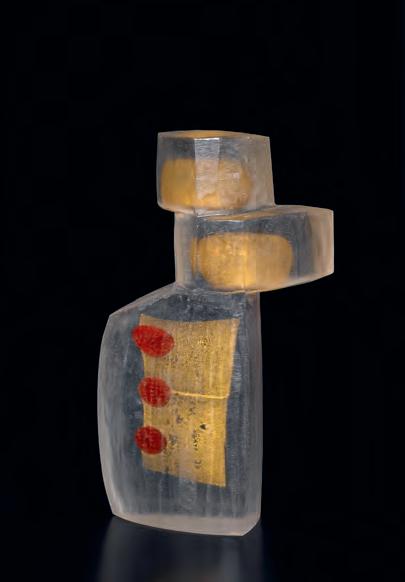
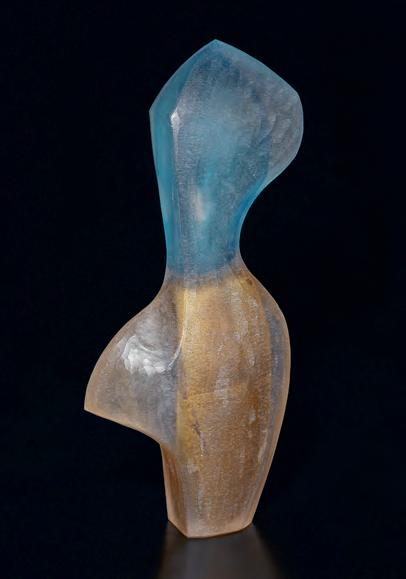
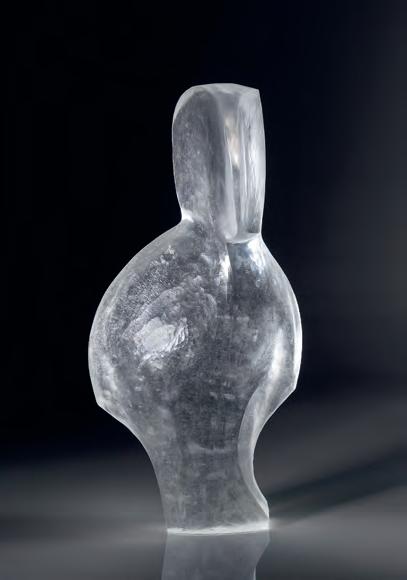
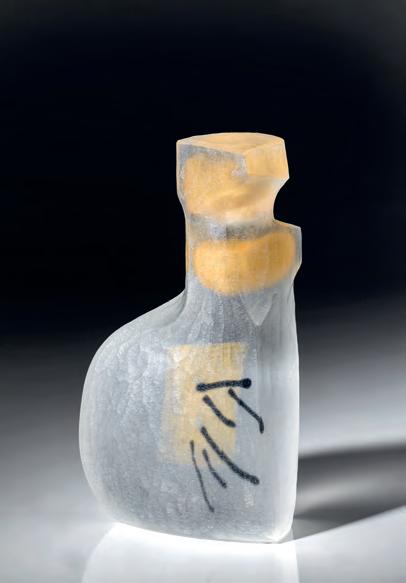
32
245 I segreti dell’anima, 2006
Murano glass sculpture
33 × 18 cm
Private collection
246 Onde Acaba a Terra e Começa o Mar, 2006
Murano glass sculpture
50 × 22 cm
Private collection
247 Athena, 2005 Murano glass sculpture
46 × 22 cm
Private collection
248 Dopo tanta nebbia una a una si svelano le stelle, 2007
Murano glass sculpture
× 18 cm
Private collection
249 O’or, 2007
Murano glass sculpture
74 × 15 cm
Private collection
250 Celtic Atmosphere, 2007
Murano glass sculpture
63 × 18 cm
Jan van der Togt Museum, the Netherlands
251 Il silenzio degli angeli, 2007
Murano glass sculpture
45 × 25 cm
Private collection
252 Sogno di libertà, 2006
Murano glass sculpture
38 × 37 cm
Private collection
275 Paloma, 2007
Murano glass sculpture
27 × 36 cm
301 Passione veneziana, 2002
Murano glass vase sculpture
H. 33 cm
302 Torcello View, 2000
Murano glass vase sculpture
H. 39 cm
Private collection
342 Archipelago, 2000
Silver necklace
Private collection
343 Inside Me II, 2020
Hammered brass and stainlesssteel brooch
344 Inside Me I, 2020
Hammered brass and stainlesssteel brooch Private collection
383 Dreaming of the Praia das Fontes, 2001
Woven cotton in handloom tapestry
156 × 200 cm
Private collection
384 When the Green in Your Eyes ..., 2001
Woven cotton in handloom tapestry 156 × 218 cm
Private collection
386
156
387
198
385 Araripe’s Green, 2001
Woven cotton in handloom
tapestry
196 × 148 cm
Private collection
Colored Sand of Morro Branco, 2001
Woven cotton in handloom
tapestry
× 219 cm
Private collection
I Will Wait for the Rain to Fall Again, 2001
Woven cotton in handloom
tapestry
× 158 cm
Private collection
This monograph expertly delves into the exquisite diversity of Bruno Pedrosa’s artistic journey, spanning across mediums from painting to Murano glass and encompassing drawings, jewelry, tapestries, and sculptures in a myriad of materials. With contributions in English, Italian, and Portuguese by Rosa Barovier Mentasti, Manlio Brusatin, Ferreira Gullar, and Thereza Pedrosa.
arnoldsche







